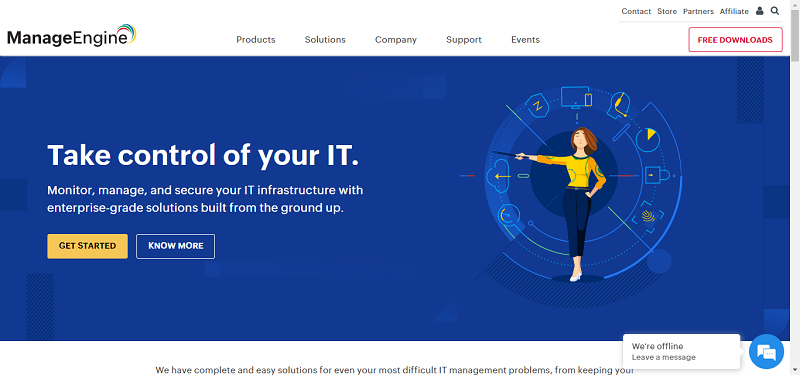Imagine that you, as a manager, are told by the powers that be that you have to find “efficiencies” within your department that will result in one million dollars of savings annually. You struggle with this. You send an email to everyone on your senior team. “Where can we save money?” The team members email back their ideas. Maybe there are people we can let go? Maybe a couple of projects can be dropped. Maybe we should have a meeting to discuss? More emails fly.
This is a typical situation at thousands of organizations across the world, daily. They face the challenges of doing business in an increasingly crowded and competitive workspace, yet the mindset stays rooted to a great degree in the past where email rules. Imagine if one of these managers stopped to look at what was going on right in front of them: why are there so many emails being sent? How much is each of these emails costing in terms of lost productivity?
Most people think an email comes and goes pretty quickly. It arrives, you read it, you answer it, and you move on. But in truth, each email comes with a time-consuming and expensive tail. In brief, the reason for this is that email represents an unknown entity that enters a person’s field of view and takes their nervous system by surprise. Although that may sound like an overstatement, the fact is the human nervous system reacts to every unknown as a threat, and consequently circles the wagons against possible attack. It’s an autonomic reflex.
Repeated experiments and observations conducted over the past 15 years have shown that the reaction to an incoming email results in a mental drainage, a redirection of nutrients and oxygen from the processing areas of the brain to the amygdala, in preparation for fight or flight. After the stimulus has been removed, it takes between five and ten minutes for an individual’s physiology to return these nutrients back where they belong. In the working world, that means every time an email arrives, an employee is not only tied up for the time required to craft a reply, but for a period of time afterwards as his/her brain gets back up to speed. Multiply this by dozens of emails per day, per person, and the time wasted in sub-par performance, even from the most dedicated of staff, quickly amounts into millions of dollars annually.
Most people who discuss cloud technology look at it in terms of data management, and struggle to understand terms such as software-as-a-service (SaaS). Few of the employees and managers in these companies are allowed the time or the freedom to investigate just how cloud-based technologies might improve communication and collaboration to either save or make money within the department.
Cloud technology has moved this concept forward by making collaborative environments both accessible and cost-effective, allowing employees to connect from anywhere, using a cascading conversational style, much like the comment sections available on social media and on many news media websites.
One of the chief benefits of collaborative workspaces is that employees can enter them by choice, rather than out of reflex. This makes all the difference in terms of mental acuity. Choosing to do something leaves an individual with a sense of control and this does not “drain the system” the same way an unknown does.
Numerous companies have experimented in recent years with the notion of email-free days, a concept that has met with limited success, but this concept stands to change as more and more departments recognize that for many types of messages, a central “corkboard” functions better, not only for the messages themselves, but as a place to place documents, thus freeing up people and servers alike from excessive use of attachments. Stepping away from email and into the cloud means more productive work delivered by more engaged employees, no longer distracted by the typewriter-like formality singularity of the email message. There is money to be made through improved staff communication.
This post is sponsored by the Enterprise CIO Forum and HP’s Make It Matter.”
By Steve Prentice





